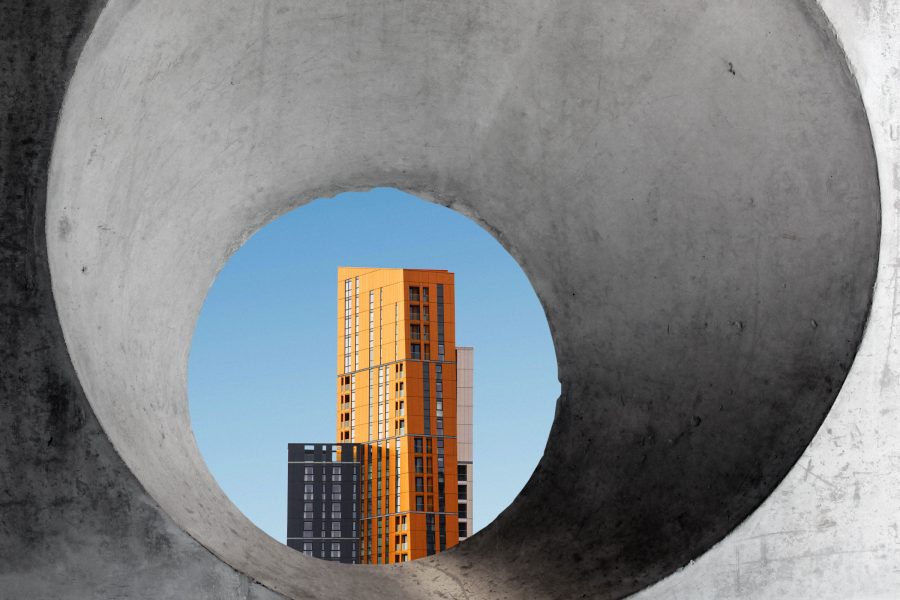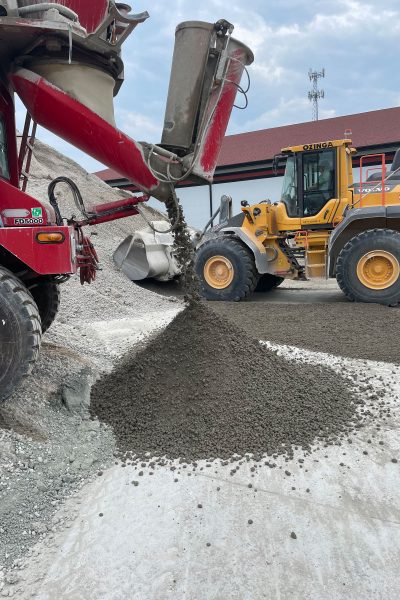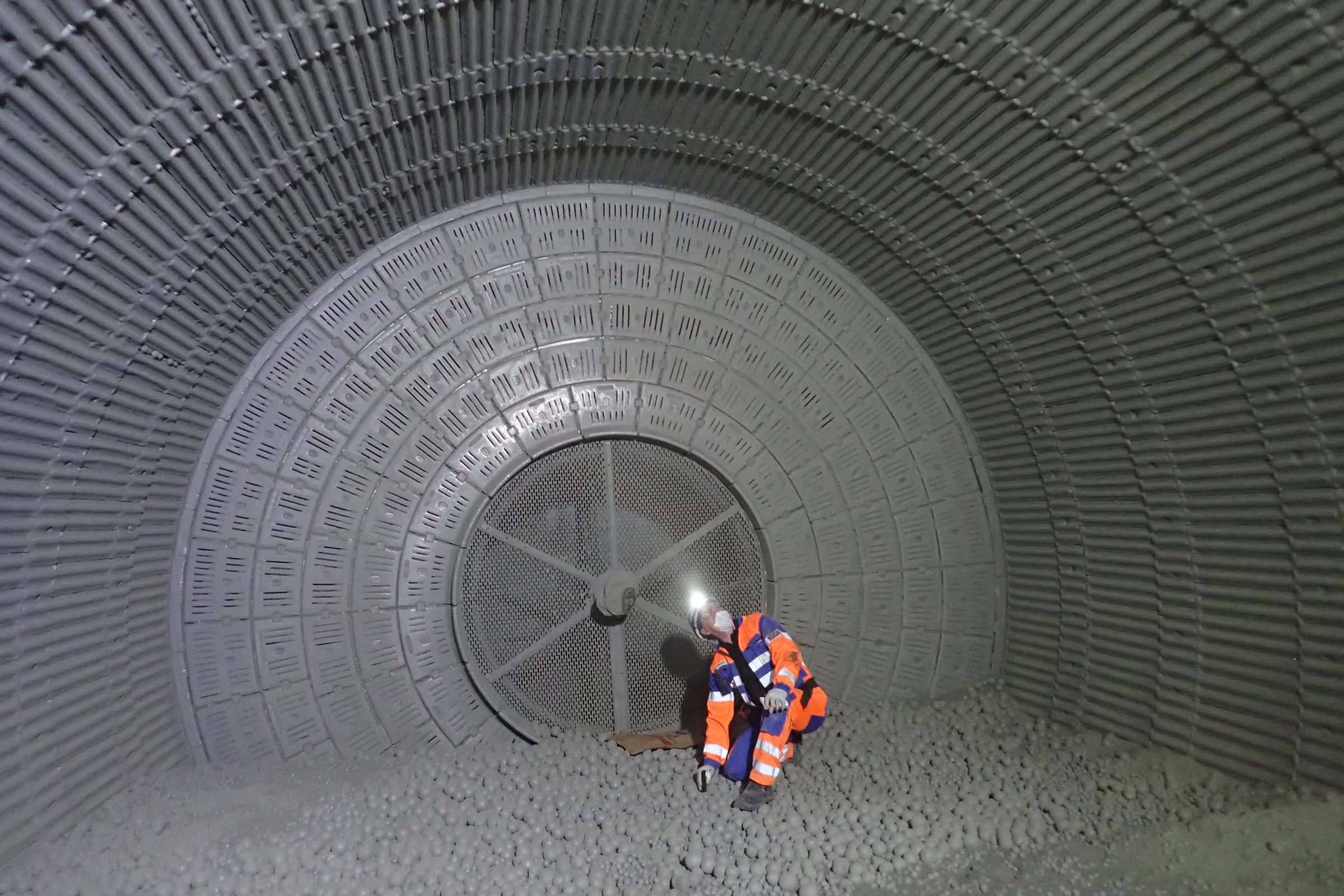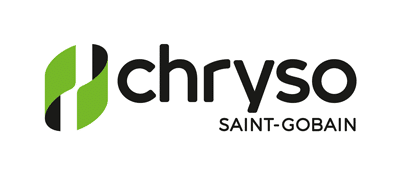Story at a glance:
- The construction industry is under increasing pressure to back sustainability claims with hard data.
- Decarbonization, circular practices, resiliency, and transparency are reshaping the world’s most-used building material.
- By reframing “waste” and “challenging inputs” as valuable resources, the latest technologies make it possible for concrete producers to improve performance and cut costs.
Concrete quite literally forms the backbone of modern life. From the roads we drive to the schools we learn in, its presence is nearly universal. Yet behind this ubiquity lies a difficult truth: Concrete production is among the largest industrial contributors to greenhouse gas emissions. Cement manufacturing alone accounts for an estimated 7% of global CO₂ emissions.
The pressure on the industry is mounting. Builders and producers face increasing regulation, scarcer high-quality raw materials, and rising demands for environmental transparency. The question is no longer if the industry will adapt, but how.
At Chryso, part of Saint-Gobain Construction Chemicals, we believe four interconnected strategies define the path forward: decarbonization, circular economy, resiliency, and transparency, all paired with performance. Together these pillars frame a holistic response to the construction sector’s sustainability challenge.
Decarbonization: Cutting Carbon at the Source
Efforts to decarbonize concrete often begin with reducing cement’s carbon intensity. Supplementary cementitious materials (SCMs) like fly ash, slag, and calcined clays have long offered partial clinker substitution, and their use is now accelerating as demand for low carbon cement and concrete grows.
One promising pathway is the adoption of limestone calcined clay cements (LC3). By replacing a portion of traditional Portland clinker with calcined clay and limestone, LC3 can cut embodied carbon nearly in half. However, this approach requires cement additives to drive quality and grinding efficiency upstream to ensure the downstream concrete retains both strength and workability.
Case studies in North America have demonstrated that customized cement additives close performance gaps and deliver measurable gains. In trials using LC3-50 blends (30% calcined clay, 15% limestone), tailored admixtures achieved compressive strength improvements of +38% at one day and +18% at 28 days compared to control mixes. With calcined clay cements, the CO₂ footprint is nearly cut in half compared to traditional Portland cement.
These results illustrate that low-carbon concrete doesn’t have to be a compromise. With the right technologies, producers can simultaneously cut emissions and improve performance.
Closing the Loop on Concrete

Photo courtesy of Stocksy/Vaidas Bucys
Beyond emissions, waste management is another persistent challenge. Between 2 and 5% of all ready-mixed concrete produced globally returns unused to plants. This material, traditionally seen as waste, can become a resource when treated properly.
Technologies like Chryso®Convert C transform returned concrete into recycled aggregate suitable for reuse. Simulations show significant economic and environmental upside, with one small plant achieving $28,000 in savings by replacing just 5% of virgin aggregate with recycled material in 20% of the volume. Circularity at this scale reduces waste while lowering demand for virgin raw materials and the energy required to produce them.
Chryso®Quad product line adds another dimension to circular practices. By combining water-reducing admixtures with advanced testing and analysis services, Quad optimizes the use of challenging sands and aggregates, enabling producers to work with locally sourced, lower-quality materials that might otherwise be overlooked. The Quad Lab supports this effort with tools like the Quad Clear Test, which provides precise analysis of sands containing swelling clay and identifies the best solutions for maintaining concrete performance while maximizing resource efficiency.
Real-world applications demonstrate the impact. In one case Quad optimization of locally available materials resolved clay contamination issues, reduced costs, and lowered embodied carbon by 3.5% through reduced transportation impacts. In another, increasing SCM use with natural pozzolan under the Quad program delivered comparable slump, air control, slump retention, and compressive strength to control mixes, while also improving finishability, reducing CO₂ emissions by 24% and saving producers up to $3 per cubic yard through mix optimization.
By reframing “waste” and “challenging inputs” as valuable resources, technologies like Convert C and Quad make it possible for concrete producers to simultaneously improve performance, cut costs, and advance toward a closed-loop material economy.
Resilient By Design: Built to Last
Sustainability requires ensuring that structures endure over time, particularly in challenging conditions. This is increasingly critical as many regions face dwindling supplies of high-quality natural aggregates, while demanding applications like bridges, marine and coastal structures, and freeze-thaw zones place additional stress on materials.
Durability Enhancers such as Chryso®DCI, Chryso®Eclipse, Chryso®Force 10 000, Chryso®HRMK, Chryso®Rasir and Chryso®PoreTite are designed to strengthen concrete for long-term performance in aggressive environments. These solutions improve resistance to corrosion, shrinkage, cracking, permeability, and alkali-silica reaction. By mitigating these durability risks they extend service life and preserve structural integrity where resilience is most needed.
Life cycle resilience is therefore not just an engineering priority but a sustainability imperative. Long-lasting, durable concrete reduces the need for premature repairs and rebuilds, conserves resources, mitigates the impacts of natural disaster destruction, and lowers embodied carbon over the full life of the structure.
Transparency: Turning Data into Trust

Photo courtesy of Chryso
The construction industry is under increasing pressure to back sustainability claims with hard data. Environmental Product Declarations (EPDs) remain an important tool, but emerging digital platforms take measurement further.
Applications like Chryso’s EnviroMix® Impact App and Returned Concrete Calculator are powerful tools that our teams use during consultation to quantify CO₂ savings, recycled content, and waste diversion in real time. Combined with our technical services, R&D expertise, application labs, and sustainability consultation, these resources enable us to provide producers, engineers, and architects with clear data to evaluate mix designs, balance trade-offs, and make informed decisions. Transparency is not just about reporting, it builds trust and accelerates adoption of new materials.
Chryso has made transparency a priority by advancing EPD development for admixtures. In 2017 we introduced the first category-specific EPDs for admixtures and have since expanded to 28 product-specific EPDs, with another 11 admixture EPDs and 2 for synthetic fibers on track to be completed by the end of 2025. Beyond publishing EPDs, we are also actively contributing to the development of the first-ever admixture Product Category Rule (PCR) in North America. This effort, more than a year in the making, has required close collaboration among admixture suppliers to gather data and reach consensus on how admixtures are classified for life cycle assessment and ultimately EPDs in the future.
These initiatives demonstrate that transparency is not only about tools and metrics; it is also about leadership, collaboration, and creating frameworks that will define how our industry measures and reports sustainability going forward.
Toward a Holistic Future
Decarbonization, circularity, resiliency, and transparency are not independent goals; they reinforce one another. A low-carbon mix design is only meaningful if it also performs over decades. Circular solutions gain credibility when supported by verifiable data. And resilient construction requires durable materials as well as resource strategies that respond to local realities.
What emerges is a picture of concrete’s future that is neither single-solution nor one-size-fits-all. Instead, it is an integrated approach that draws from multiple strategies to align environmental performance with structural reliability.
Chryso’s work with customers on blended cements, both in the field and in our application labs, continues to open new opportunities for reducing carbon while meeting performance demands. This practical collaboration is complemented by our longer-term research and development programs, which aim to push the boundaries of sustainable construction even further.
The case studies and tools now available demonstrate that sustainable, high-performance concrete is not a distant vision, it is being delivered today. If these efforts continue to converge, the most widely used material on earth can also become one of the most sustainable.


